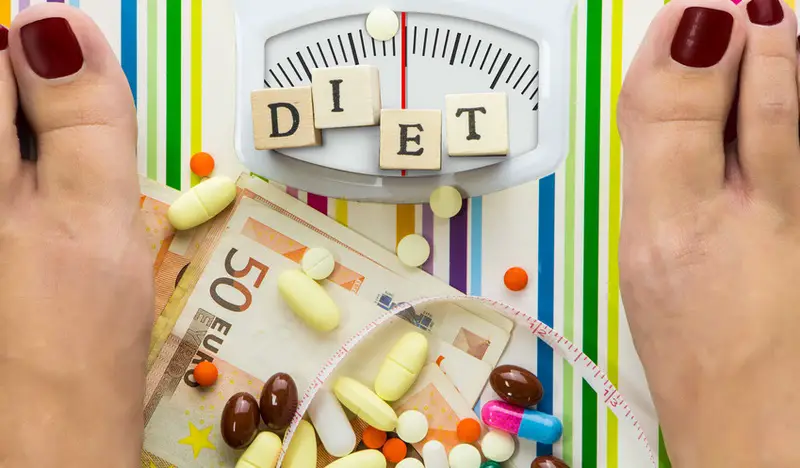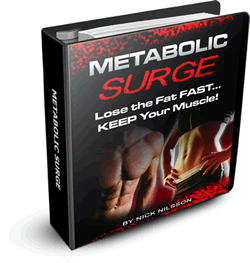By Nick Nilsson
Author of The Starting Monday Diet
So you want to drop some fat but you're not sure of what the best way is to get started?
Right now, I'm going to give you a short guide that will get you moving in the right direction...an exact workout program (done 3 times per week) covering weights and cardio, as well as what to eat, how much to eat, and what supplements can helpful and which ones you don't need.
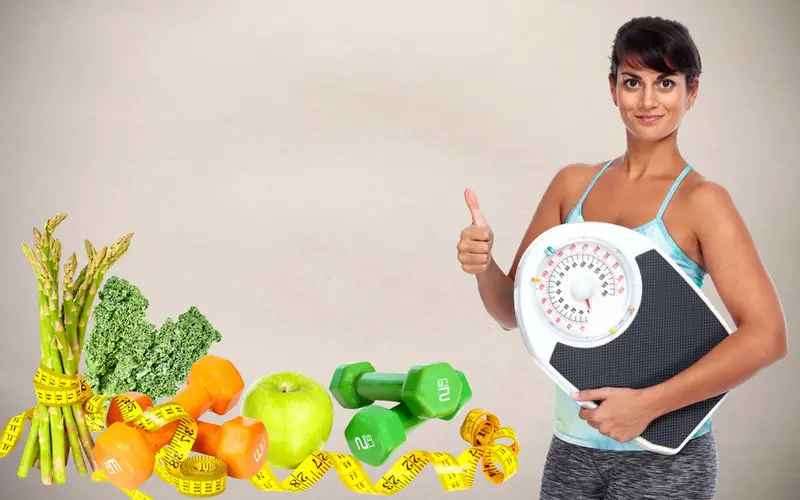
STEP 1 - FOOD QUALITY for Fat Loss
For fat loss, WHAT you're eating is just as important as HOW MUCH you're eating. Think of it it way...you can lose weight eating 1000 calories worth of chocolate pudding every day...but how do you think you're going to feel eating nothing but chocolate pudding.
It's very important to eat good quality, nutritious food when you're trying to lose fat. Your body needs nutrients to function. Without good nutrition, your body will react in two ways: first, it will slow down your metabolism to try and conserve nutrients. Second, it will set off RAGING cravings to try and get you to eat more nutrients.
Focus on unprocessed, "unboxed" foods. Unprocessed foods are generally more nutritious and easier for your body to digest and work with. This simple change can make a big difference to your fat-loss efforts.
Here's the deal...contrary to popular thought, a calorie is NOT a calorie. The popular scientific consensus used to be (and still is according to some people) that all calories are created equal. That it didn't matter what you ate in terms of nutrients (fat, carbs and protein), as long as the total calorie intake was below a certain point, you would lose fat.
Unfortunately, that is NOT the case and it's common sense - what do you think would help you lose fat better...that 1000 calories of chocolate pudding or 1000 calories of lean chicken breast, vegetables and brown rice? Quality of food DOES matter and it can mean the difference between success and failure.
My advice: for 1 week, take a small notepad wherever you go and write down EVERYTHING you eat. And I do mean EVERYTHING - even if it's just a snack or a little nibble of a cracker, write it down, as well as how much of it you ate. Remember, this is just for one week - you don't have to do this for the rest of your life so be honest about everything you eat!
At the end of the week, look at what you've eaten and put a checkmark beside everything that is unprocessed (a good rule of thumb is anything that can be found on the outside aisles of the grocery store, lean meats, fish, eggs, veggies, fruits, nuts, potatoes, whole grains, legumes, etc.). This is a good visual cue to see exactly how you're doing with your food quality.
If you see that more than half of the foods have checkmarks beside them, you're doing much better than average already! Ideally, you want to get that number of checkmarks as high as possible.
For more information about nutrition and eating...
STEP 2 - FOOD QUANTITY for Fat Loss
Now that you've looked at WHAT you're eating, it's time to turn your attention to HOW MUCH you're eating. Even the highest quality, nutritious food can make you gain fat if you eat too much of it. So to lose fat effectively, you basically have to eat less food.
There are many methods and formulas for figuring this out but, bottom line, ALL of them are really just "best-guesses"... even the scientific formulas that work out your requirements to the single calorie are just guesses.
These guesses are based on plenty of data, though, and they can be very helpful in determining a good starting point. However, if a formula says you need X number of calories and you eat that and you still aren't losing fat, obviously that number isn't the number for you.
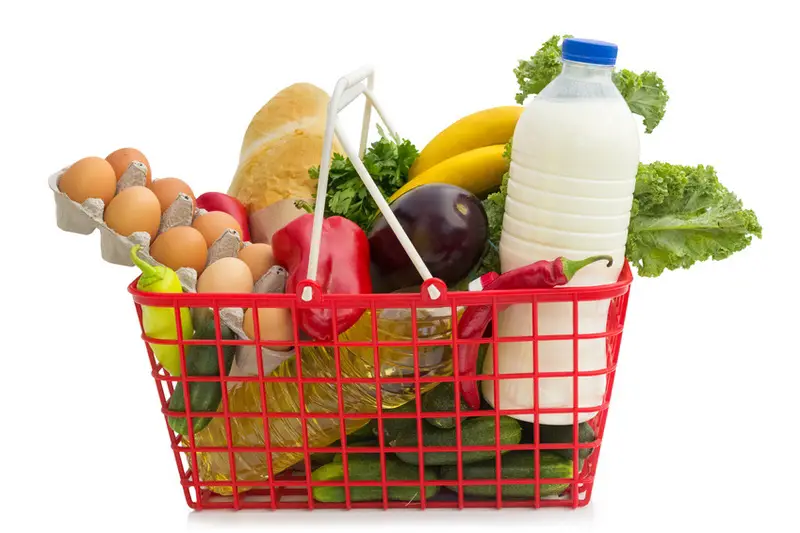
Here's a very simple rule of thumb for estimating a STARTING POINT for determining your caloric intake to lose fat: take your weight in pounds and multiply it by 10. For example, if you weigh 175 pounds, that would give you a starting point of 1750 calories per day.
Go back to that week-long list of foods that you wrote down (from the previous section) and plug those foods into the database on this site (it has a HUGE number of foods that you can track):
Add up your calories for the whole week, divide that by 7 (to get your average caloric intake per day) and see how it compares to number you get from the simple formula I described above.
If it's higher, you need to eat less food. If it's lower and you find you're STILL not losing fat, you may need to eat even less than that.
I would NOT recommend going below 1000 calories per day for food intake at the VERY lowest. When you start getting that low, you run into problems because your body isn't getting enough energy and nutrients from the small amount of food you're eating.
This is doubly true when you're exercising as well. Your body will react by slowing your metabolism and burning up lean tissue (like your muscle mass). This will put a stop to fat loss and can be dangerous!
STEP 3 - WEIGHT TRAINING for Fat Loss
One of the first things people ask me when they want to lose fat is "how much cardio should I do." When I respond by telling them how much weight training they should do, they always look at me like I'm crazy.
But here's the bottom line: if you go into an aerobics class and take a snapshot of the people in there then come back 6 months later and take another shapshot, chances are VERY good that most of the people in the class haven't made any significant changes to their bodies.
Sure, cardio training burns calories, but it doesn't reshape your body and it doesn't build muscle mass to same degree as weight training. This is true for both men and women.
** And a note specifically to the ladies, when I talk about muscle mass for you, I'm NOT talking about big, bulky bodybuilder muscles...I'm talking about the sleek, toned muscles that give your body the curves and shape you're looking for! Without THAT kind of muscle mass, you may get smaller but you still won't have the shape you're looking for.
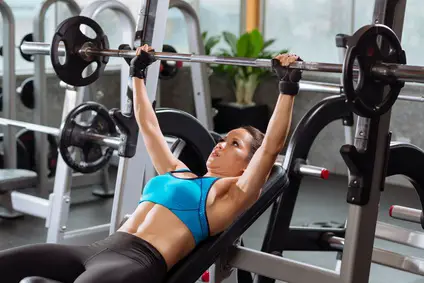
If you want to lose fat, you should weight train ideally two to three times per week (e.g. Monday, Wednesday, and Friday). I like to recommend total body workouts each session for beginning trainers as it helps the body to learn the exercises faster and build strength and muscle faster.
Here's what a typical resistance training session would look like:
3 sets of back
3 sets of chest
3 sets of thighs
2 sets of shoulders
2 sets of hamstrings
2 sets of biceps
2 sets of triceps
2 sets of calves
2 sets of abs
Take about a minute rest in between each set and aim for about 8 to 10 reps per set.
The MOST important thing to note here with rep ranges is that those 8 to 10 reps are a GUIDE NOT A TARGET. The idea is to choose a weight that makes it tough to complete those 10 reps. The idea is NOT to take a weight that you can easily do 10 reps with, do 10 reps then stop regardless of whether the muscle was really worked or not. To make progress, you need to push yourself.
I cannot TELL you how many times I've seen people diligently counting their reps as they whip through an exercise then stop before they even put a dent in their strength levels. When I ask them why they stopped so soon, they always tell me "that's how many reps it says to do on my program."
Don't be afraid to push yourself. THAT is where the real results are.
If you would like more information on how to perform exercises, visit our Exercise Library
STEP 4 - CARDIO TRAINING for Fat Loss
Even though you may think I'm opposed to cardio training judging by what I wrote above, that is NOT the case. Cardio definitely has a place in a fat-loss program.
I have three main issues with cardio training for fat loss:
1. It shouldn't be the main focus of a fat-loss exercise program when it so often is.
This is a point I mentioned above... I believe weight training should be the focus of an exercise program for fat loss. Not only is it more effective for fat loss, there is actually LESS chance of injury than with the typical repetitive-movement cardio activities (anyone who has tried to take up jogging when they're 20+ pounds overweight can attest to that!).
2. It's normally done with low intensity and for long periods of time, which does NOT boost the metabolism.
The REAL key to losing fat is ramping up your metabolism to burn calories ALL THE TIME rather than just when you're exercising. By keeping intensity low, you only burn calories DURING exercise, not so much after. But when you boost intensity, your metabolism gets cranked up and you burn more calories ALL DAY.
For a more detailed explanation of higher-intensity cardio training and its benefits, read these articles:
What Do You Mean Low-Intensity Training Isn't The Best For Fat Burning?
The Insider Secrets of Interval Training
3. It's typically done WAY too much.
In order to get results with typical long-duration cardio, many people do it upwards of 5 or 6 and even 7 days a week! This is fine if you're an athlete training for an endurance competition but if you're a busy person (as many people are), you just don't have TIME to sit on a stationary bike for an hour a day.
Couple that long duration and high frequency with a repetitive movement and you not only have greater chance of injury, you also have greater chance of boredom (which sometimes means giving up on exercise altogether because "it just doesn't work for me").
My recommendation is always to use interval training instead of the long-duration cardio training. It can be done MUCH faster (10 to 20 minutes), boosts your metabolism for long periods AFTER training, and finally, it actually helps your body hang onto muscle tissue while burning fat.
There are three ways to include cardio in with the weight training program I described above.
1. Do your cardio training immediately AFTER your weights.
When you do it this way, don't eat anything after you do weights - just go directly into your cardio after a few minutes rest. You only need about 10 minutes of training to make a dent in your fat stores. This has the advantage of allowing you to get all your training done all at once (in the gym 3 times a week and that's it).
2. Do your cardio training on separate days or separate sessions
This is a good way to go in that you won't be tired from the weight training when you do the interval training. You may need go a bit longer in your sessions (e.g. 15 to 20 minutes) when done on its own. This method does have the advantage of giving your metabolism a separate boost in addition to the weights. When doing it this way, you can do cardio on its own on Tuesday and Thursday, for example.
Either method is very effective. The real key is working hard at the training.
NOTE: DO NOT do interval training every day. It may work well for a little while but you will very quickly overwork the body, which will stop your results.
3. Go for plenty of walks and get plenty of steps in the day
Now, I know this seems like it conflicts with what I was saying about long-duration cardio above, but walking is a whole different animal. It doesn't impact your overall recovery and it won't slow down gains in muscle mass. It WILL burn calories (mostly fat) while you're doing it.
Walking is honestly one of the best types of exercise you can do because of how accessible it is and how it keeps you moving.

STEP 5 - SUPPLEMENTS for Fat Loss
When I refer to supplements here, I'm NOT talking about fat-burner pills. These pills are, ironically-enough, not the answer for losing fat. Your own natural metabolism IS and it's WAY more powerful than any pill.
How Fat Loss Pills Can Make You Fatter
When I refer to supplements, I'm talking about supplements that help SUPPORT your body nutritionally, not send it into a caffeine-filled, hyper-alert state that fries your nervous system.
When training to lose fat, here are some of the supplements I recommend:
- Protein Powder - to help with rebuilding and repairing muscle tissue and keeping the immune system functioning well (learn about protein and fat loss here). You can also get a sample of one of my favorite protein powders here.
- Multivitamins - to help you cover all your nutritional bases
- Vitamin C - helps repair joints, is a strong antioxidant and boosts the immune system. The form that I use and recommend is actually fat-soluble, meaning it doesn't get flushed out of your system quickly, like most Vitamin C does. This really boosts the benefits of it!
- Magnesium - for your bones and also for muscle contractions...it's hard to get enough of these nutrients when reducing caloric intake
These are the basics, as far as I'm concerned. It's critical to give your body ample nutritional support when trying to lose fat.
For more information on supplementation...
A Quick, "No B.S." Guide To Muscle-Building and Fat-Loss Supplementation
---
CONCLUSION:
These 5 simple steps should get you started on your way to losing the extra fat. Here are they are in review:
Step 1 - improve the quality of the food you eat
Step 2 - eat less food
Step 3 - start weight training
Step 4 - include some cardio training
Step 5 - use supplements to support your body
Go through the list step-by-step and you will on your way to fat-loss success.
Get more articles and information on fat loss here.
And if you're interested in a more detailed fat-loss diet plan, be sure to check out my Starting Monday Diet.
I came up with a diet plan that actually REQUIRES me to blow it on the weekends.
You know as well as I do that most people blow their diets on the weekends...it's the #1 cause of diet failure.
You want to be social and go out to dinner with friends or family.
And who wants to be on a diet in your favorite restaurant.
The approach that I take works WITH your weekly schedule, allowing you to be strict during the weekdays and looser on the weekends.
I'm not going to tell you it'll let you to eat whatever you want, whenever you want and still lose weight.
You can't.
But you CAN eat whatever you want on certain days of the week... and actually have it be an ADVANTAGE to you rather than setting you back.
Check out the full diet program here.
In my experience, it's the best eating strategy I've ever found for a sustainable, medium-term fat loss diet, that you can easily do for 4+ months at a time to get to where you want to be.
Learn more about what this approach can do for you here.
![]()
More From Fitstep.com
Share This Page...
---
Home -> Fat Loss -> Workouts -> Beginner Fat Loss Program


